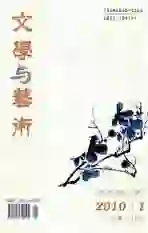浅谈中英文成语互译的归化与异化
2010-04-22赵亮亮
【摘要】中英文中的成语都表达了深刻的文化内涵,然而两者却有很大区别。在成语翻译中,归化和异化是与文化现象紧密相关的两种策略。本论文通过探讨中英文成语的文化内涵,从两种文化在生活环境、习俗、历史、宗教等方面的区别进行阐述,认为在成语翻译中两种策略并非对立,而是相互补充。
【关键词】归化;异化 成语翻译;文化
IIntroduction
Idioms are the quintessence of a nations culture and wisdom.English and Chinese idioms embody different national cultural features and different cultural information. Living environment, traditional customs, material cultures and religious beliefs should be considered as main factors in the course of the differences.
Translation plays the most efficient and significant role in cultural exchange which means not only transferring the denotative meaning of a word or a phrase from one language into another, but also conveying cultural information from one language into another. In the modern world, intercultural communication benefits from knowledge and understanding of the cultural features and peculiarities, and in translation, domestication and foreignization can help to achieve this goal.
IIDomestication and foreignization in Idiom Translation
“Domesticating translation” and “foreignizing translation” are two translation strategies coined by L. Venuti (1995). The former is intended to minimize the strangeness of the foreign text for target language readers, better conveying the meaning of the target language culture to the readers, while the latter is aimed to retain the foreigness of the original thus giving a brand-new feeling to the target readers. In the process of choosing whether to employ domestication or foreignization, cultural features are very important consideration, Then in the following part, this paper will discuss from the four perspectives: the living environment, customs, histories and religions.
a. Different living environment and experiences
Language is a reflection of the objective world, so different languages will occur due to different environments. For example, “不到黄河心不死” “有眼不识泰山”etc, such idioms in Chinese are based on the special things in China. While, idioms like “to carry coals to Newcastle” “ go Dutch” are closely related to the things and places that are familiar to the English speaking countries.
China is an agricultural country, the peasants have presented many idioms like “ 挥金如土” “人勤地不懒”; English is an island, its navigation was always ahead of other countries in history, and thus there are many idioms that are related to fishery and navigation. For instance, “ to keep ones head above water” (奋力图存), “ all at sea” ( 不知所措),“ to fish in the air” (缘木求鱼) etc.
b. Different customs
Many English people like dogs.In their eye, dogs are loyal to their master and worth trusting. When they say “dog” they often mean “the man” or “that fellow”. For instance, “love me, love my dog” (爱屋及乌) “lucky dog” (幸运儿), “Dog does not eat dog “ (同类不相残). Traditionally, dogs are regarded as a kind of disgusting animal in China. Most of idioms about dog have a bad meaning. For example: “狗嘴里吐不出象牙” (A filthy mouth cannot utter decent language).
c. Different histories
“心较比干多一窍,病如西子胜三分”
Hawkes version: She had more chambers in her heart than the martyred Bi Gan; and sufered a tithe more pain in it than the beautiful Xi Shi. (“比干 ” and “西施”,are two historical figures very familiar to the Chinese readers. The former is a man of high intelligence while the later is a beauty. In a sense, they are almost the Chinese counterparts of Solomon and Venus in western culture.) Hawke translates literally, adding detailed explanations to enable the target readers to comprehend.
d.Different religions
There are many idioms that have relationship with religious both in English and Chinese. Most westerners believe in God. So there are lots of idioms in English, such as “God damn it”, “Man proposes, God disposes”. While Buddhism and Taoism have a big influence on Chinese culture, there are also many idioms that are related to these two kinds of religions, like “借花献佛”, “临时抱佛脚”, “一人得道,鸡犬升天” etc.
IIIConclusion
Domestication and foreignization are not only compatible, but should complement with each other. Even if the translator takes domestication as the dominating strategy in order for the translation to be easily understood by the receivers, he/she can also reserve the original images concerning specific culturally loaded expressions; on the other hand, even if the translation is to preserve the exoticism to import foreign cultures into the target language, changes must be made on certain points which appear quite unnatural or even unaccepted by the target readers and language.
On the basis of a comprehensive analysis of vari-ous factors involved in translation, the translators should be able to make decisions on the problems of which cultural factors in the original should be reserved and how to reserve them, which factors should be adapted so as to be accepted in the target culture and the extent of the adaption. The translators should understand the different cultures profoundly before translating and apply foreignization or domestication according to the real situation.
【Bibliography】
[1]孟建钢. 关于翻译原则二重性的最佳关联性解释[J]. 中国翻译, 2002, (5).
[2]郭冬女.从目的论看文化因素的翻译[J].河北理工学院学报,2003,(5).
[3]孟志刚.论翻译中“异化”和“归化”的辩证统一[J].西安外国语学院学报,1999,(4).
[4]王东风.归 化 与 异 化: 矛 与 盾 的 交 锋[J].中 国 翻 译 ,2002,(5).
[5]王平.归化与异化:殊途同归的翻译策略[J].福州大学学报,2004,(1).
[6]许建平, 张荣曦. 跨文化翻译中的异化与归化问题[J]. 中国翻译,2002,(5).
[7]Munday, Jeremy. Introducing Translation Studies: Theories and applications. London and New York, 2001.
作者简介:赵亮亮,中国海洋大学青岛学院英语系任教,助教,研究方向:英文翻译,翻译学论文
